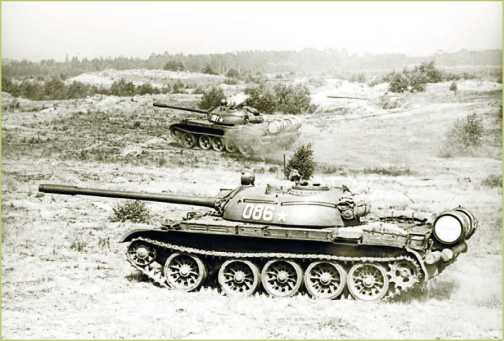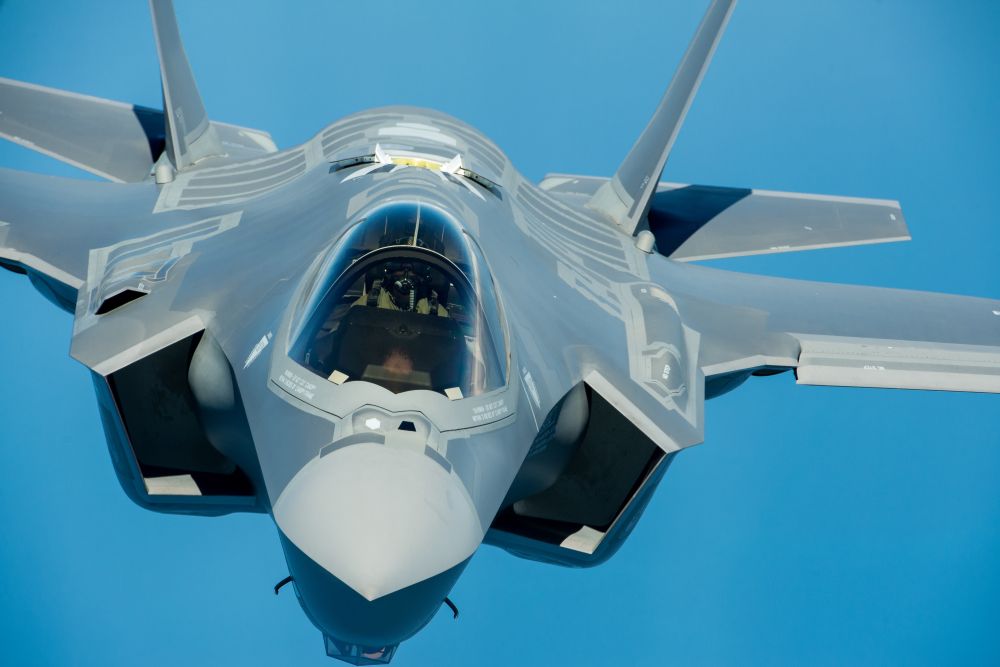
T-55 was produced and modernized outside the USSR
Polish T-55 with a 12,7 mm DShK machine gun and old-style tracks.
The T-55 tanks, like the T-54, became one of the most produced and exported combat vehicles of the post-war period. They were cheap, easy to use and reliable, so developing countries were willing to buy them. Over time, China, which produces clones of the T-54/55, began to export them. Another way tanks of this type were distributed was by re-exporting their original users. This practice expanded enormously at the end of the last century.
It quickly became clear that the T-55 is an elegant object of modernization. They could easily install newer means of communication, sights, auxiliary and even main weapons. It was also easy to install additional armor on them. After a slightly more serious repair, it was possible to use more modern tracks, intervene in the power train and even replace the engine. The great, even notorious reliability and durability of Soviet technology made it possible to modernize even cars several decades old. In addition, the purchase of newer tanks, both Soviet and Western, was associated with very serious costs, which often discouraged potential users. That is why the T-55 has been redesigned and upgraded a record number of times. Some were improvised, others were implemented sequentially and included hundreds of cars. Interestingly, this process continues to this day; 60 years (!) Since the start of production of the T-55.
Poland
At KUM Labendy, preparations for the production of T-55 tanks began in 1962. In this regard, it was supposed to significantly improve the technological process of production of the T-54, introducing, among other things, automated submerged arc welding of hulls, although at that time this excellent method was almost not used in Polish industry. The documentation provided corresponded to the Soviet tanks of the first series, although at the start of production in Poland a number of small but significant changes were made to it (they were introduced in Polish vehicles at the end of the decade, more on that). In 1964, the first 10 tanks were handed over to the Ministry of National Defense. In 1965, there were 128 T-55s in the units. In 1970, 956 T-55 tanks were registered with the Ministry of National Defense. In 1985, there were 2653 of them (including about 1000 modernized T-54s). In 2001, all existing T-55s of various modifications were withdrawn, a total of 815 units.
Much earlier, in 1968, Zakład Produkcji Doświadczalnej ZM Bumar Łabędy was organized, which was engaged in the development and implementation of tank design improvements, and later also the creation of derivative vehicles (WZT-1, WZT-2, BLG-67). ). In the same year, production of the T-55A was launched. The first Polish modernizations are new
Produced tanks provided for the installation of a 12,7-mm anti-aircraft machine gun DShK. Then a soft driver's seat was introduced, which reduced the load on the spine at least twice. After several tragic accidents when forcing water barriers, additional equipment was introduced: a depth gauge, an efficient bilge pump, and a system to protect the engine from flooding in case it stops under water. The engine has been modified so that it can run not only on diesel, but also on kerosene and (in emergency mode) on low-octane gasoline. A Polish patent also included a device for power steering, the HK-10 and later the HD-45. They were very popular with drivers, as they almost completely eliminated the effort on the steering wheel.
Later, the Polish version of the 55AK command vehicle was developed in two versions: T-55AD1 for battalion commanders and AD2 for regimental commanders. Machines of both modifications received an additional R-123 radio station at the rear of the turret, instead of holders for 5 cannon cartridges. Over time, to increase the comfort of the crew, a niche was made in the aft armor of the turret, which partially housed the radio station. The second radio station was located in the building, under the tower. In AD1 it was R-130, and in AD2 it was the second R-123. In both cases, the loader acted as a radio telegraph operator, or rather, a trained radio telegraph operator took the place of the loader and, if necessary, performed the functions of the loader. Vehicles of the AD version also received an electric generator to power communications equipment in place, with the engine turned off. In the 80s, the T-55AD1M and AD2M vehicles appeared, combining proven solutions for command vehicles with most of the discussed improvements of the M version.
In 1968, under the guidance of Eng. count T. Ochvata, work has begun on the pioneer machine S-69 "Pine". It was a T-55A with a KMT-4M trench trawl and two long-range P-LVD launchers placed in containers at the rear of the track ledges. For this, special frames were mounted on them, and the ignition system was brought to the fighting compartment. The containers were quite large - their lids were almost at the height of the tower's ceiling. Initially, the engines of the 500M3 Shmel anti-tank guided missiles were used to pull 6-meter strings, on which cylindrical explosives with expanding springs were strung, and therefore, after the first public presentations of these tanks, Western analysts decided that these were ATGM launchers. If necessary, empty or unused containers, popularly known as coffins, could be dumped from the tank. Since 1972, both new tanks in Labendy and vehicles repaired in Siemianowice have been adapted for ŁWD installation. They were given the designation T-55AC (Sapper). Equipment variant, first designated S-80 Oliwka, upgraded in the 81s.

